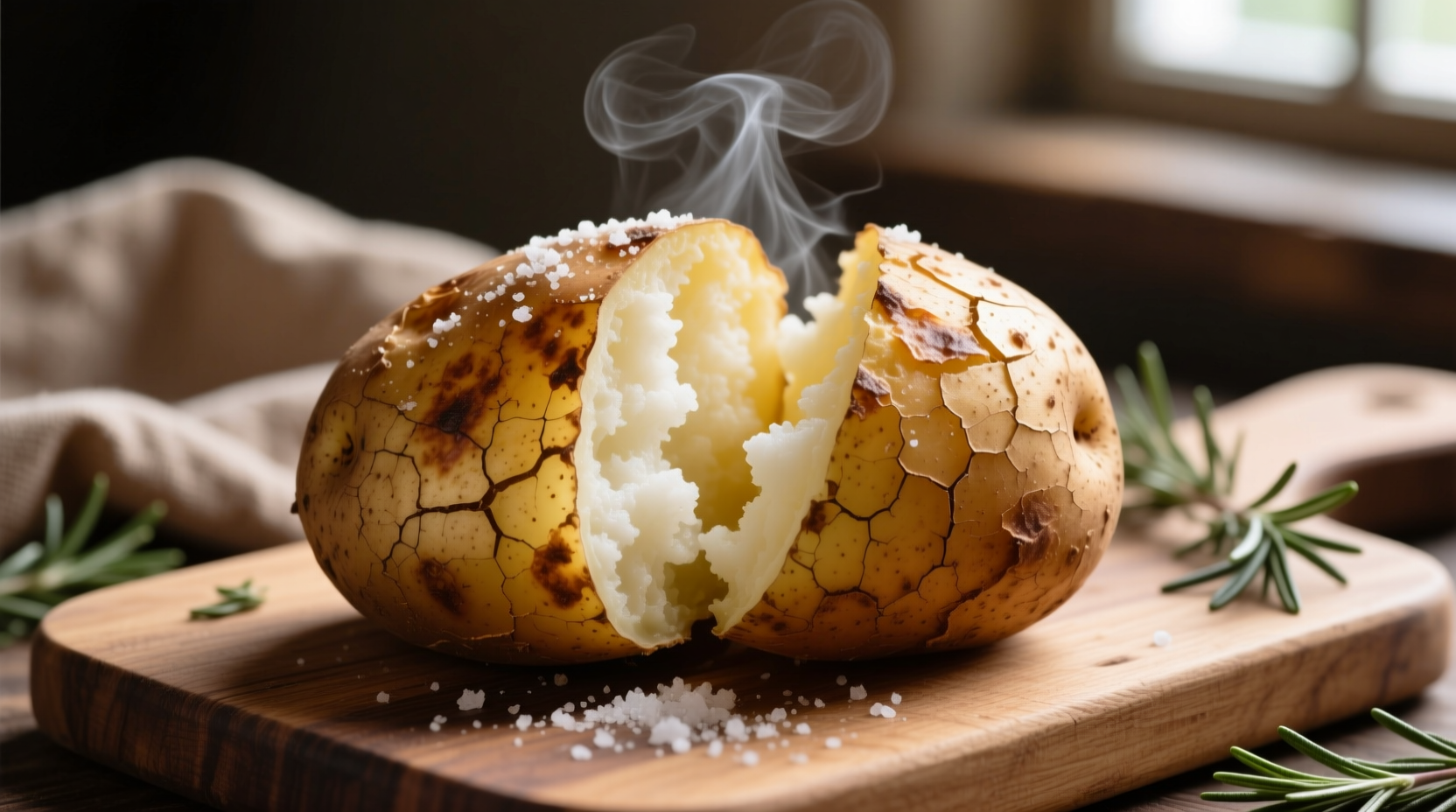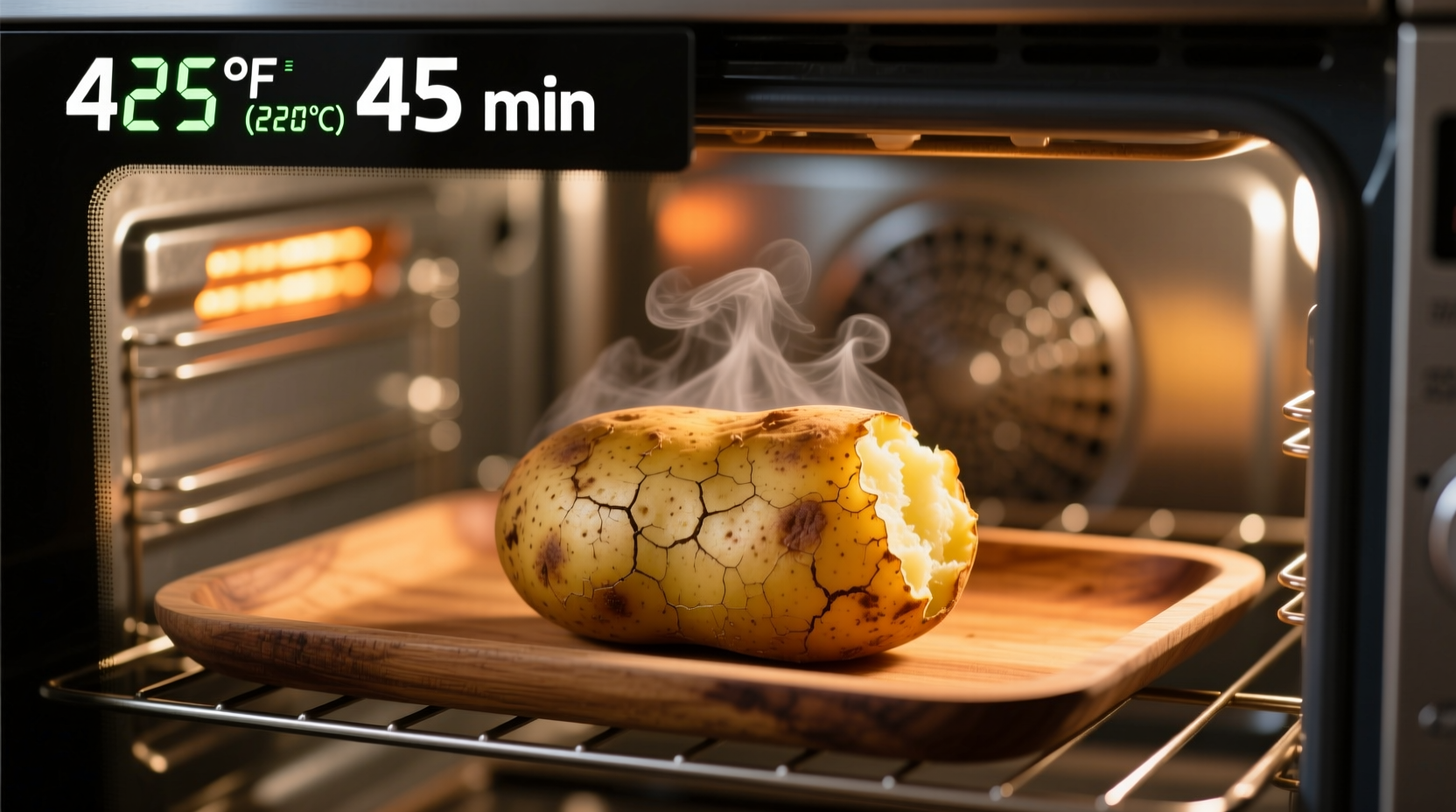There's nothing quite like a perfectly baked potato with crispy skin and fluffy interior. Whether you're preparing a weeknight dinner or hosting a special meal, mastering the art of oven-baked potatoes ensures consistent, restaurant-quality results every time. This guide delivers precise time and temperature recommendations backed by culinary science, so you'll never serve undercooked or dried-out potatoes again.
The Science Behind Perfect Baked Potatoes
Understanding the chemistry of potato baking transforms your results. When potatoes heat to 205-210°F internally, the starch granules fully absorb moisture and swell, creating that signature fluffy texture. The USDA Food Safety and Inspection Service confirms this temperature range ensures both safety and optimal texture (USDA FSIS).
Step-by-Step Baking Process
Preparation: Setting Up for Success
Start with these essential preparation steps:
- Clean thoroughly: Scrub potatoes under cold water to remove dirt
- Dry completely: Pat dry with paper towels - moisture prevents crispy skin
- Prick strategically: Use a fork to make 6-8 deep punctures (this prevents steam buildup and bursting)
- Skip the foil: Contrary to popular belief, baking potatoes unwrapped creates superior texture
Oven Setup: Creating the Ideal Environment
Position your oven rack in the center and preheat to 400°F (204°C). This temperature balances cooking speed with moisture retention. Higher temperatures (425°F+) risk drying the exterior before the center cooks, while lower temperatures (375°F or below) extend cooking time unnecessarily.
| Potato Size | Weight | Recommended Time | Internal Temp |
|---|---|---|---|
| Small | 4-5 oz | 35-45 minutes | 205-210°F |
| Medium | 6-8 oz | 45-60 minutes | 205-210°F |
| Large | 9-10 oz | 55-70 minutes | 205-210°F |
| Extra Large | 11+ oz | 65-80 minutes | 205-210°F |
Baking: Monitoring and Testing
Place potatoes directly on the oven rack with a baking sheet on the rack below to catch any drips. Halfway through cooking, rotate potatoes for even browning. The most reliable doneness test? Insert an instant-read thermometer into the thickest part - it should read 205-210°F. Alternatively, squeeze gently (using oven mitts) - perfectly cooked potatoes yield slightly to pressure.

Pro Tips for Restaurant-Quality Results
Professional chefs use these techniques to elevate their baked potatoes:
Oil and Salt Technique
Rub potatoes with 1 teaspoon of olive oil and 1/2 teaspoon of coarse salt before baking. This creates an irresistibly crispy skin without making the potato greasy. The salt draws out moisture from the skin surface, promoting crispiness.
Avoiding Common Mistakes
Many home cooks make these critical errors:
- Using foil: Creates steam that softens the skin rather than crisping it
- Skipping the prick step: Risk of potatoes bursting in the oven
- Guessing doneness: Relying on time alone without checking internal temperature
- Crowding the oven: Baking multiple potatoes too close together reduces airflow
Special Considerations
Different oven types require slight adjustments:
- Convection ovens: Reduce temperature by 25°F and check 10 minutes early
- Older ovens: May have hot spots - rotate potatoes more frequently
- High altitude: Above 3,000 feet, add 5-10 minutes to cooking time
Why This Method Works Every Time
The 400°F baking temperature creates the ideal environment for the Maillard reaction on the skin while allowing gradual starch conversion inside. Food science research from the University of California Davis Department of Food Science and Technology shows this temperature range maximizes both flavor development and texture (UC Davis Food Science).
Serving Suggestions
For the classic experience, slice open baked potatoes and fluff the interior with a fork before adding your favorite toppings. The natural starchiness creates the perfect base for butter, sour cream, cheese, or chives. Remember that potatoes continue cooking slightly from residual heat after removal from the oven, so pull them out just before they reach perfect doneness.
Frequently Asked Questions
How do I know when my baked potato is done without a thermometer?
The best non-thermometer method is the squeeze test. Using oven mitts, gently squeeze the potato - it should yield slightly but not feel mushy. The skin should appear slightly wrinkled, and a fork should slide easily into the center with no resistance.
Can I bake potatoes at a lower temperature for longer?
While possible, baking below 375°F significantly increases cooking time and risks drying out the potato. The extended time allows more moisture to evaporate, resulting in a less fluffy interior. For best results, maintain the 400-425°F range.
Why shouldn't I wrap potatoes in foil before baking?
Foil creates a steaming environment that softens the skin rather than crisping it. The University of Idaho Potato Extension confirms that foil-wrapped potatoes have a boiled texture rather than the desirable baked texture with crispy skin and fluffy interior.
How long do baked potatoes stay hot after removing from the oven?
Baked potatoes retain heat surprisingly well. Wrapped in a clean kitchen towel, they'll stay hot and ready to serve for 30-45 minutes. Avoid sealing them in airtight containers, which creates steam and softens the skin.
Can I bake multiple potatoes at once without adjusting time?
Yes, but ensure proper spacing. Leave at least 1 inch between potatoes for adequate air circulation. When baking more than 6 potatoes, add 5-10 minutes to the total cooking time and rotate the positions halfway through for even baking.











 浙公网安备
33010002000092号
浙公网安备
33010002000092号 浙B2-20120091-4
浙B2-20120091-4